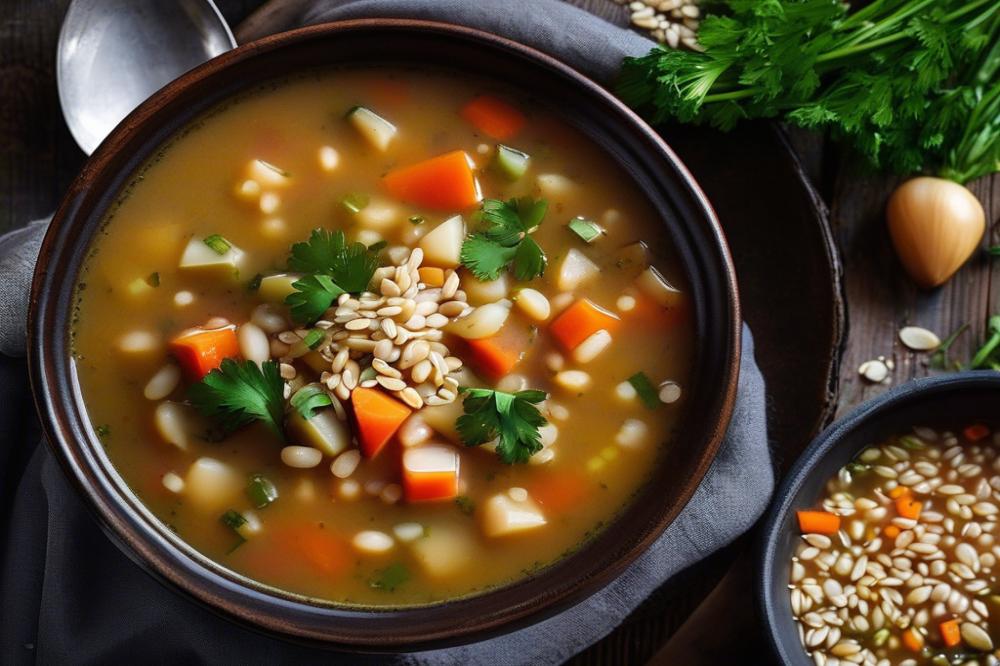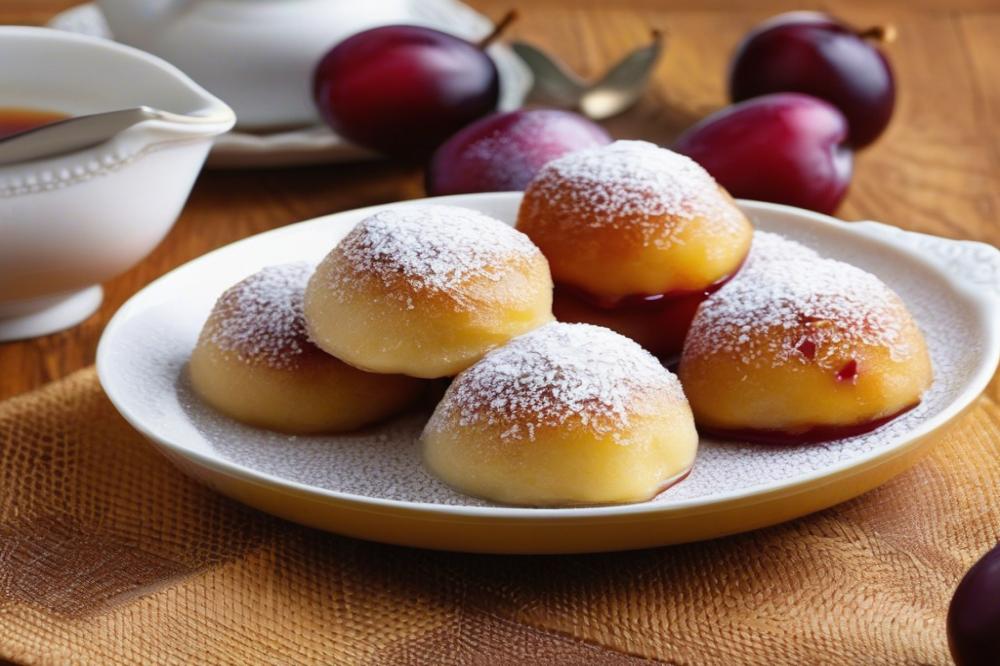Introduction
Polenta is a beloved traditional dish that traces its roots back to Italy. Made primarily from finely ground cornmeal, this staple food has a rich history, often bringing warmth and nourishment to families. Its versatility makes it a canvas for various flavors, perfect for savory dishes. Creamy Polenta can be served alone or as a base for toppings, enhancing its appeal as comfort food.
The true magic lies in the addition of melted cheese, specifically Queijo da Ilha. This Brazilian cheese adds a distinct flavor and creaminess that elevates the dish. Its unique texture melts beautifully, creating a deliciously gooey topping that enhances the overall experience. Incorporating this cheese into recipes transforms a simple meal into something truly special.
This dish connects beautifully to both Portuguese and Brazilian cuisines. In Brazil, polenta has its own adaptations, often inspired by traditional Italian methods. This union showcases how food evolves, blending cultures and flavors over time. Cheesy recipes featuring this Brazilian specialty create a bridge between the two culinary worlds.
When prepared well, creamy polenta delivers an incredibly satisfying experience. Its soft texture, combined with melted cheese, offers a comforting sensation that warms the soul. As a standout among comfort foods, it invites everyone to indulge and relish its flavors. Whether served as a side dish or the main feature, this dish brings people together around the table.
What is Polenta?

Polenta is a traditional dish made from cornmeal. Originating in northern Italy, it has roots that go back centuries. Initially, people used ground grains, but corn became popular after its introduction to Europe. The texture can vary from creamy polenta to a firmer consistency, depending on how it is prepared.
This dish holds a unique place in Italian cuisine. However, it differs from other cornmeal dishes like cornbread or grits. While cornbread is baked and fluffy, polenta is usually boiled until smooth and creamy. Grits, often associated with southern U.S. cooking, are made from white corn and typically have a different flavor profile.
Cultural significance plays a role in both Italian and Portuguese cuisines. In Italy, it often serves as a side dish or a base for hearty meals. In Portuguese culture, polenta can be found in various recipes, sometimes accompanied by melted Queijo da Ilha, a Brazilian cheese that adds a delightful richness. Comfort food found in both countries, polenta showcases how simple ingredients can bring people together.
There are many variations of polenta worth noting. It can be served in savory dishes alongside stews or grilled meats. Some recipes even transform creamy polenta into a topping for pies or casseroles. Chefs often experiment with different flavors by adding herbs, spices, or cheeses. Easy recipes abound, making it accessible for home cooks looking to enjoy this cherished dish.
Ingredients and Nutritional Information

To create this delightful dish, gather the following ingredients:
- Cornmeal – 1 cup
- Water – 4 cups
- Salt – 1 teaspoon
- Queijo da Ilha – 200 grams
- Butter – 2 tablespoons
- Black pepper – to taste
This recipe highlights simple and accessible items that combine to form a rich, creamy polenta topped with melted cheese. Let’s take a closer look at the nutritional value of each component.
Cornmeal
One cup of cornmeal provides approximately:
- Calories: 440
- Carbohydrates: 92 grams
- Fiber: 7 grams
- Protein: 12 grams
Cornmeal acts as a hearty base and contributes a satisfying texture to your dish. It’s packed with complex carbohydrates that offer sustained energy.
Queijo da Ilha
This unique Brazilian cheese adds flavor and richness. For 200 grams of Queijo da Ilha, you can expect:
- Calories: 600
- Fat: 50 grams
- Protein: 35 grams
This cheese is perfect for melting. It delivers a creamy consistency, making it ideal for cheese recipes that call for gooey toppings.
Butter
Two tablespoons of butter contain:
- Calories: 200
- Fat: 22 grams
Butter enriches the dish with flavor. It plays a critical role in building that comforting taste found in many savory dishes.
Benefits of These Ingredients
Cornmeal is a gluten-free grain option, making it suitable for various diets. High in fiber, it supports digestive health and can help regulate blood sugar levels. Queijo da Ilha not only adds protein but also brings a unique flavor profile that enhances the overall experience. Meanwhile, butter provides essential fats needed for a balanced diet and gives a decadent touch to the creamy base.
Using these ingredients creates an authentic traditional dish that reflects the intersection of Italian cuisine and Brazilian flavors. Enjoying melted cheese on top is pure comfort food, providing warmth and satisfaction with every bite.
Cooking Instructions

Step-by-step guide to preparing polenta
Start by boiling a large pot of water. This is the base for your creamy polenta. Add a generous amount of salt to the water. The salt will enhance the flavor as you cook.
Once the water reaches a rolling boil, it’s time to add the cornmeal. Do this gradually, while stirring continuously. This technique prevents lumps, making the mixture smooth.
Keep stirring as it thickens. Continue cooking until the polenta is creamy, which usually takes about 30 minutes. The texture should be rich and satisfying. When ready, remove it from the heat.
Incorporate some butter and additional seasoning if you wish. The butter will add richness, making it even more delicious. Consider adding salt, pepper, or herbs according to your taste.
Preparing queijo da ilha for melting
Slicing the cheese can be tricky, so opt for a sharp knife. Aim for thin slices to promote even melting. Place them in a small pan over low heat. Keep a close eye on it while the cheese softens.
Stir gently to avoid burning. You want a smooth, melted cheese that clings well to the creamy polenta. Patience here pays off, as properly melted cheese will enhance the dish.
Serving suggestions for creamy polenta with melted cheese
When serving the dish, spoon the polenta onto plates first. Next, drizzle the melted cheese generously over the top. This creates a beautiful contrast between the golden polenta and the creamy, gooey cheese.
For added texture, sprinkle some freshly chopped herbs on top. Basil or parsley works well and adds a burst of color. This combination visually entices while adding herbs’ fresh flavor.
Ideas for pairing with other savory dishes
This traditional dish can be accompanied by various savory options. Pair it with grilled meats for a hearty meal. Chicken or beef complements the flavors wonderfully.
Consider roasted vegetables for a lighter choice. Their natural sweetness is perfect with the cornmeal and cheese. Lentil dishes also make excellent partners, adding nutrients and varied textures to your meal.
Lastly, don’t forget about sauce options. A rich tomato sauce or a flavorful pesto can elevate the entire experience. These combinations provide versatility and enhance the comfort food element of creamy polenta.
Variations and Additional Tips

Alternative Cheeses to Use
Different types of cheese can add varying flavors to your creamy polenta. For a similar texture to queijo da ilha, consider using mozzarella or fontina. These cheeses melt wonderfully, creating a rich, gooey topping. If you want a stronger taste, try aged gouda or a sharp cheddar. Both can bring a delightful twist to the traditional dish. Each cheese recipe can change the overall bite of the meal, so feel free to experiment.
Adding Herbs and Spices
Spices and herbs can enhance savory dishes in amazing ways. Consider mixing in fresh basil or rosemary to give more depth. A pinch of crushed red pepper flakes can bring heat, while a sprinkle of thyme adds an earthy flavor. Garlic powder or onion powder also provides a nice touch. Adding these ingredients can elevate the taste profile, making each bite interesting and warm.
Customizing for Dietary Needs
When making polenta, it is important to think about dietary restrictions. If someone is vegan, use plant-based cheese alternatives that melt well. This allows everyone to enjoy the meal together. For gluten-free diets, polenta itself is a great choice since it is made from cornmeal. Additionally, you can add vegetables to enhance nutrition. Options like sautéed spinach or roasted bell peppers can contribute both flavor and color.
Preparing in Advance and Reheating Tips
Preparation can save time on busy days. Cook polenta ahead of time and store it in the refrigerator. When you are ready to serve, simply reheat it on the stove or in the microwave. Stir in a little water or broth to restore its creamy consistency. If you prefer, you can even bake it after mixing in the melted cheese for a delightful crust. Baking brings a new texture to the dish that can be very pleasing. Enjoy this comfort food any day of the week.
Final Thoughts on Creamy Polenta with Queijo da Ilha
The appeal of creamy polenta paired with melted queijo da ilha is undeniable. Its rich texture and comforting flavors create a dish that warms the heart and satisfies the taste buds. This combination stands out not just as a meal, but as an experience. Food connects us to our cultural roots, and this dish showcases the best of Portuguese and Brazilian cuisine.
In both Portugal and Brazil, this dish holds a special place. It symbolizes the fusion of tradition and modernity, bringing families together around the table. Various regional variations add to its charm and significance, as different areas contribute their own unique touches. This culinary heritage makes it more than just food; it represents long-standing customs and community bonding.
Trying your hand at making this dish at home is entirely achievable. Many easy recipes are readily available. With a bit of patience and practice, anyone can master the art of crafting this delightful meal. Plus, experimenting in the kitchen encourages creativity, allowing you to explore endless cheese recipes and ingredient combinations.
Enjoying comfort food can be a fulfilling experience. While creamy polenta provides a perfect base, don’t hesitate to explore various toppings and sides. From sautéed vegetables to spicy meats, the possibilities are vast. Whether you stick to tradition or get creative, this dish guarantees satisfaction. So, gather your ingredients and enjoy the delicious journey of cooking at home.



